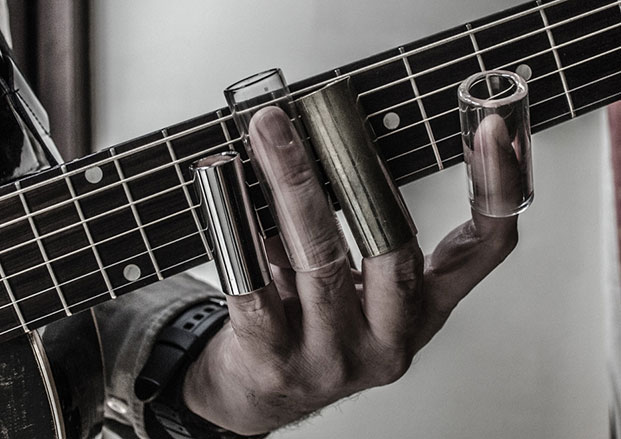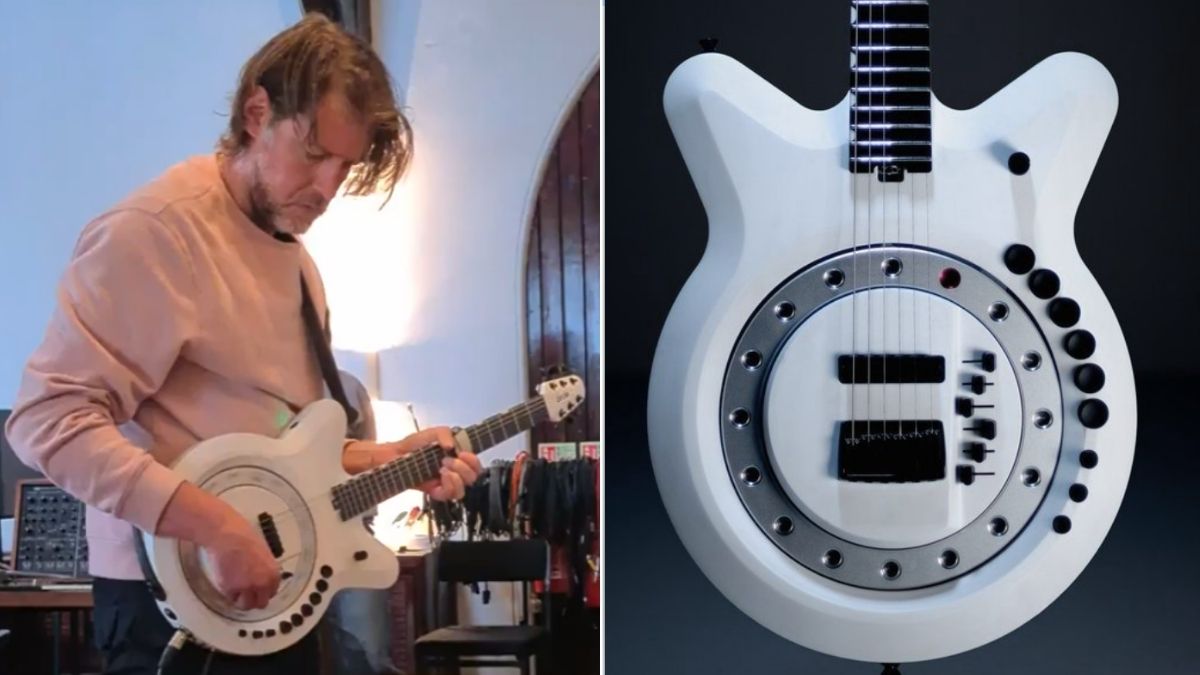How a Slide Taught Me to Make Up My Own Mind

Aristotle called it the “unscribed tablet”—the tabularasa—the idea that we come into the world as a blank slate, free of any pre-formed knowledge. But thanks to the internet and mass marketing, we don’t remain blank for long, though how much of that knowledge is based on fact is debatable.
The internet in particular moves things along so quickly that we often don’t have time to form our own opinions before someone downloads us theirs. While another person’s experience can give us insight, it also can make it harder for us to make our own discoveries and choices. In the end, it’s all too easy to simply reach other people’s conclusions.
This came up recently when I started a 10-week course on playing blues slide guitar as part of some not-so-adult education at my local college. Even though I’ve been playing guitar a long time, slide guitar was new to me.
A slide is about the simplest guitar accessory imaginable. It’s a glass, metal or ceramic tube you stick your finger in and slide up and down the guitar’s neck. Do that with a guitar tuned to a chord and music—more or less—ensues.
The earliest slides were made using cow bones, knives or, for the thirsty bluesman, the neck of a wine bottle. But, of course, everyone wants to invent something new and complicate the crap out of it, slides included.
So by the time I began slide shopping a century after their invention, I found slides made from plastic, glass (wine bottle, soda-lime, tempered, lead-crystal and borosilicate), brass, stainless steel, chrome and carbon fiber, ranging from around two bucks to a blues-inducing $325 (the pick to go along with it will set you back an extra $90).
According to the internet, I not only needed to decide what material the slide should be made of, but its length (stubby ones to cover a string or two or long ones to cover them all), its inner diameter, wall thickness and taper. With bottlenecks, even the color supposedly affects the volume and tone, due to the mineral content used to create the hue. At that moment I realized why the salesman at the guitar store had warned me, “Most guitarists who play slide have a couple dozen.” I have eight already, and the class isn’t even over yet.
All the latest guitar news, interviews, lessons, reviews, deals and more, direct to your inbox!
Once I’d chosen a slide (or eight), the question became which finger should I put it on. Again, I turned to the internet. But no help there.
Dave Hole uses his index finger. Bonnie Raitt uses her middle finger. Duane Allman and Mississippi Fred McDowell used their ring finger, while Muddy Waters and Johnny Winter used their pinky. And, oh yeah, just to mess with my head, blues guitarist Brian Cober uses two slides simultaneously, one on his middle finger and the other on his thumb.
By the time I finished researching all the slide guitarists I could think of, the consensus came down to this:
Choose a light-, medium- or heavyweight slide. It should be short, medium or long and made of glass, metal, plastic, ceramic, bone, carbon fiber or other material. Wear the slide on, between, or over your index, middle or ring finger, pinky or thumb, played Spanish or lap style and plucked using bare fingers, a pick, thumbpick, or fingerpicks.
Dear Internet ... Thanks for the help. Since opinions turned out to be as plentiful as trolls on the net, in the end I ignored them all. I tried several kinds of slides in several sizes and soon found out what worked for me. For one thing, I found that comfort was more important than material. If I could wear it comfortably I could play better. That meant getting the inner diameter so it fit my finger well (adios, sweaty big Coricidin bottle), was easy to control, and could reach across all six strings.
I thought about telling you what I settled on, but that would undermine the whole purpose of this article, which is this: who cares what I or (and here you can insert the name of any manufacturer, ad agency, writer, or guitarist) thinks? It’s your music. Do what you want.
I understand that with a guitar, there’s a big expense and many choices involved, and some guidance wouldn’t go amiss. No need to reinvent the wheel and all that. But along with picks and strings, slides are one of the cheapest guitar goodies to experiment with. Try a few different kinds and a few different fingers.
Feel free to read the thousands of opinions out there regarding slides. But for each great musician you see doing it one way, you’ll find another equally great musician doing it completely differently. So here’s my opinion, which if you’ve learned the lesson of this little essay, you can happily ignore: stick the damn thing on your finger—I don’t care which slide or which finger—slide it up and down the stings, and see what works best.
For you.
William Baeck is a writer, photographer and hack guitarist living in London. You can check out his webpage at williambaeck.com and reach him on Facebook and Twitter.
